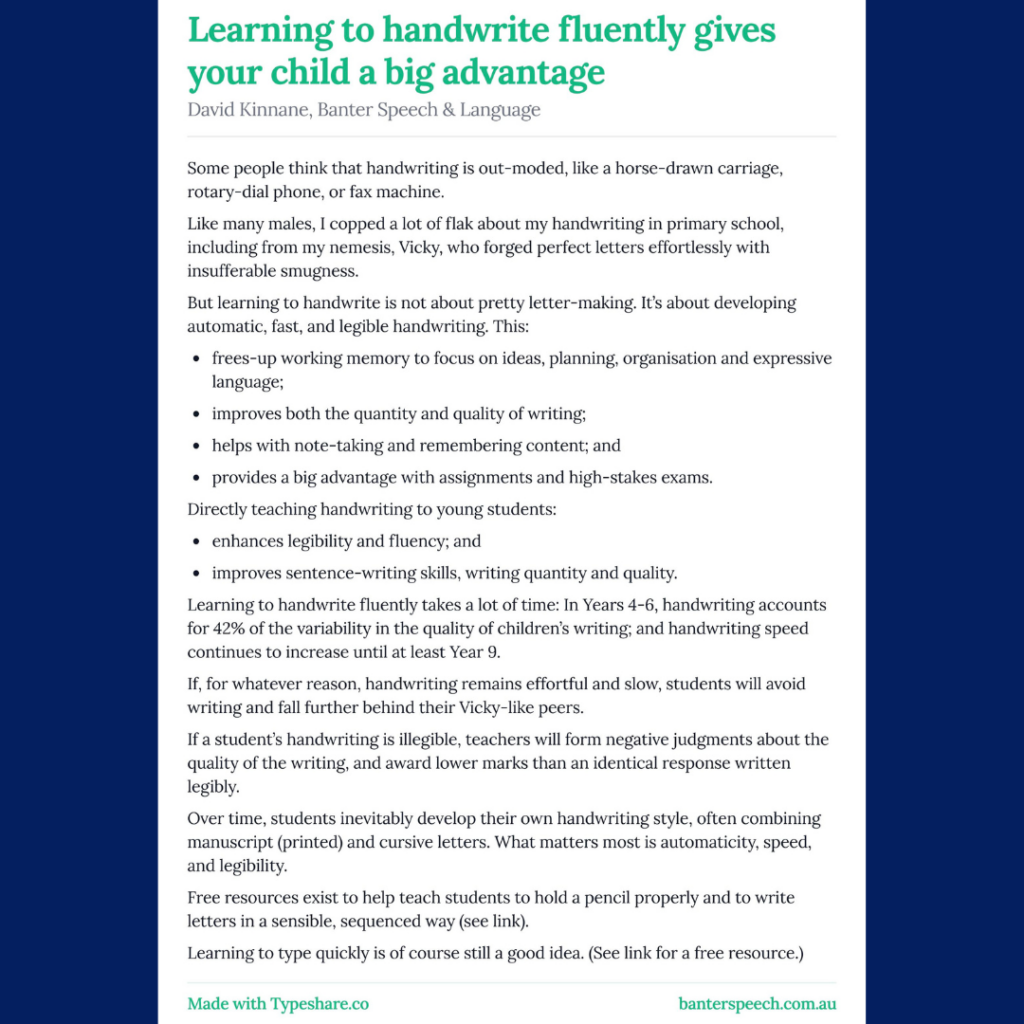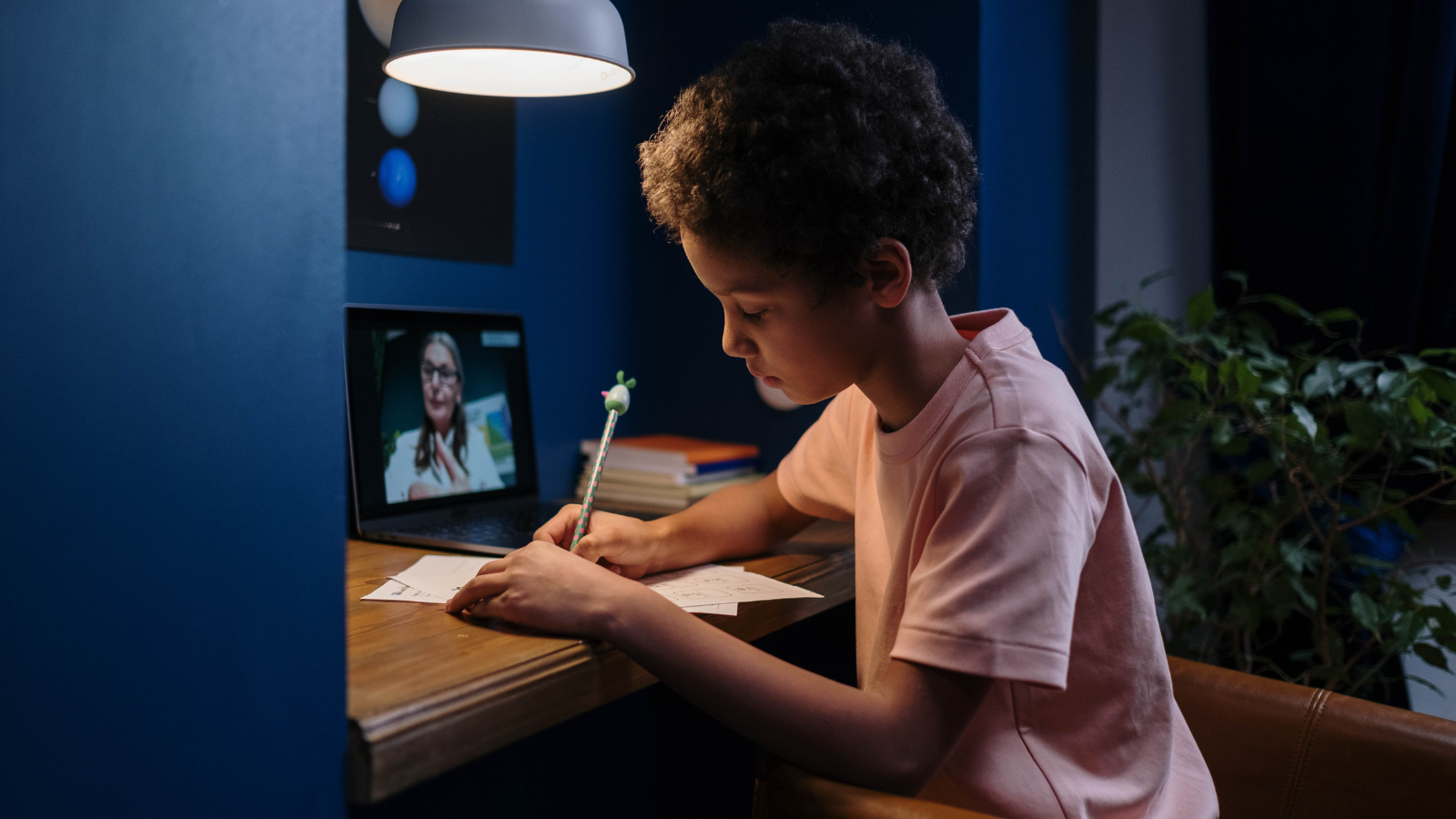Learning to handwrite fluently gives your child a big advantage
Some people think that handwriting is out-moded, like a horse-drawn carriage, rotary-dial phone, or fax machine.
Like many males, I copped a lot of flak about my handwriting in primary school, including from my nemesis, Vicky, who forged perfect letters effortlessly with insufferable smugness.
But learning to handwrite is not about pretty letter-making. It’s about developing automatic, fast, and legible handwriting. This:
- frees-up working memory to focus on ideas, planning, organisation and expressive language;
- improves both the quantity and quality of writing;
- helps with note-taking and remembering content; and
- provides a big advantage with assignments and high-stakes exams.
Directly teaching handwriting to young students:
- enhances legibility and fluency; and
- improves sentence-writing skills, writing quantity and quality.
Learning to handwrite fluently takes a lot of time: In Years 4-6, handwriting accounts for 42% of the variability in the quality of children’s writing; and handwriting speed continues to increase until at least Year 9.
If, for whatever reason, handwriting remains effortful and slow, students will avoid writing and fall further behind their Vicky-like peers.
If a student’s handwriting is illegible, teachers will form negative judgments about the quality of the writing, and award lower marks than an identical response written legibly.
Over time, students inevitably develop their own handwriting style, often combining manuscript (printed) and cursive letters. What matters most is automaticity, speed, and legibility.
Free resources exist to help teach students to hold a pencil properly and to write letters in a sensible, sequenced way (see link below).
Learning to type quickly is of course still a good idea. (See link below for a free resource.)

Related resources:
(1) Handwriting Links:
Yikes! Look at that pencil grip (and what to do about it)
Spelfabet: Free early phonemic awareness, phonics and handwriting workbook
Steve Graham’s CASL Handwriting Program
William van Cleave – PaTTAN – Effective Core Writing Instruction – Handwriting Grades K-2
Royal Children’s Hospital Melbourne: Kids health information about early writing skills
(2) Typing Link:
This article also appears in a recent issue of Banter Booster, our weekly round up of the best speech pathology ideas and practice tips for busy speech pathologists, providers, speech pathology students, teachers and other interested readers.
Sign up to receive Banter Booster in your inbox each week:

Hi there, I’m David Kinnane.
Principal Speech Pathologist, Banter Speech & Language
Our talented team of certified practising speech pathologists provide unhurried, personalised and evidence-based speech pathology care to children and adults in the Inner West of Sydney and beyond, both in our clinic and via telehealth.








